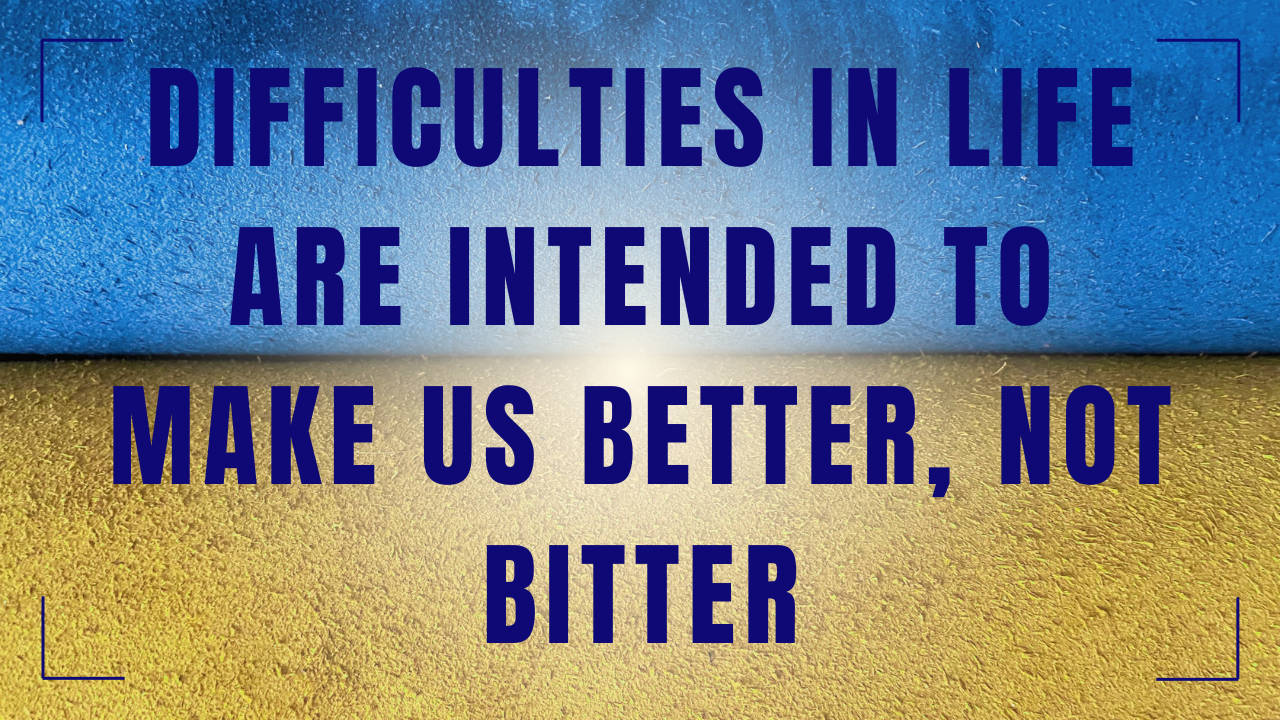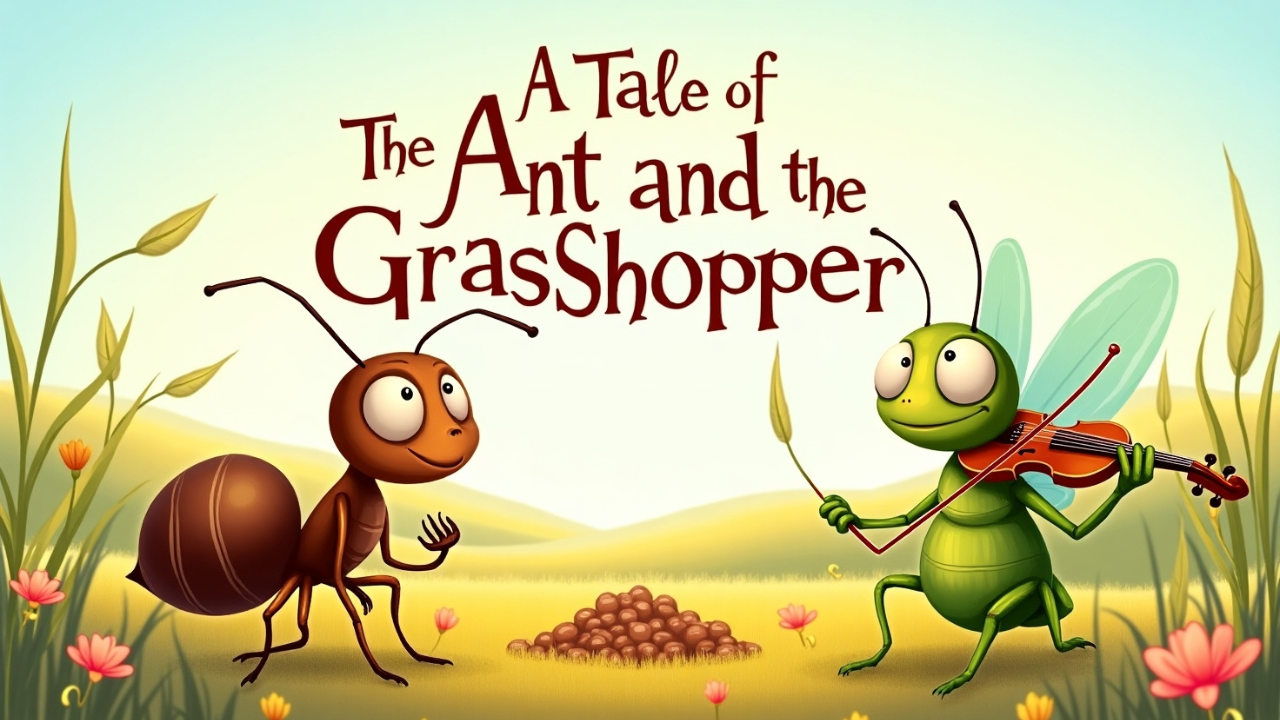The tale of the tortoise and the hare is a classic from Aesop’s fables. It teaches us about the value of perseverance and hard work. This story has been loved by children for centuries, showing us that staying focused can lead to success.
A sun-dappled forest glade, where a determined tortoise and a cocky hare stand at the starting line of a race. The tortoise, with its weathered shell and steadfast gaze, exudes quiet confidence. The hare, ears perked and muscles taut, radiates an air of arrogance. Soft, filtered light bathes the scene, creating an atmosphere of timeless wisdom. In the lush, verdant background, towering trees and a meandering stream set the stage for this iconic fable of perseverance and the perils of overconfidence. The camera angle captures the decisive moment, inviting the viewer to discover the profound lessons within this timeless tale.
Aesop’s fables, like the tortoise and the hare, have been shared for generations. They offer wisdom and insights into our lives. This story reminds us of the power of perseverance and determination. By exploring this tale, we can learn more about its themes and characters, and how they inspire us today.
The story of the tortoise and the hare is a timeless classic. It has been retold in many ways, but its core message stays the same. Aesop’s fables, including this one, are a big part of our culture. They teach us that success is not just about speed or strength, but about staying focused and determined.
- The tortoise and the hare is a classic tale that teaches valuable lessons about perseverance and hard work.
- Aesop’s fables, including this story, have been passed down for generations, providing wisdom and insight into the human experience.
- The story of the tortoise and the hare is a reminder that staying focused and determined can lead to great success.
- The classic tale has been retold and reinterpreted in many ways, but its core message remains the same.
- The tortoise and the hare’s journey is a reminder that success is not just about being the fastest or the strongest, but about staying focused and determined.
- Aesop’s fables, including the tortoise and the hare, are an integral part of our cultural heritage, offering valuable lessons and insights into the human experience.
Aesop’s fables have been loved by kids for centuries. “The Tortoise and the Hare” is one of his most beloved stories. It comes from ancient Greece, where Aesop lived and wrote.
The moral of the story is key in aesop’s fables. It teaches us valuable lessons. In “The Tortoise and the Hare,” the moral is that slow and steady wins the race. This simple yet powerful story summary has been shared in many ways.

A classical illustration of Aesop’s Fables, depicting the timeless tale of “The Tortoise and the Hare”. In the foreground, a determined tortoise and a cocky hare race across a lush, rolling landscape, their expressions filled with determination and competitiveness. The middle ground features a winding dirt path, flanked by vibrant foliage and towering trees. In the background, a warm, golden-hued sky casts a serene, contemplative atmosphere, hinting at the wisdom and moral lessons that underlie this iconic fable. Rendered with a timeless, storybook aesthetic, the scene evokes the rich history and enduring appeal of Aesop’s enduring tales.
The story’s roots are in ancient Greek culture. Aesop’s fables were shared orally, each with a unique moral. Over time, these stories have changed, with different cultures adding their own spin.
The stories of aesop, like “The Tortoise and the Hare,” show the power of storytelling. As cultures retell these tales, they bring their own views. This has made a rich collection of stories loved worldwide. By looking at the story summary and moral of the story, we can see why aesop’s fables are so important.
The world of children’s literature is full of memorable characters. The tortoise and the hare are among the most iconic. They stand for perseverance and determination, and overconfidence and complacency, respectively.
In children’s literature, the tortoise and the hare are more than just characters. They symbolize important life lessons. The tortoise teaches us about persistence and staying focused on our goals. The hare warns us about the dangers of being too confident and complacent.
Some key traits of these characters include:
- Perseverance: The tortoise shows us the value of keeping going, even when things get tough.
- Humility: The hare’s failure is a lesson in the importance of staying humble and grounded.
- Determination: The tortoise’s determination to win shows the power of hard work and dedication.

A lush, whimsical scene depicting iconic fable characters from children’s literature. In the foreground, the playful Tortoise and the swift Hare from “The Tortoise and the Hare” race across a sun-dappled meadow, their expressions filled with determination. In the middle ground, the cunning Fox from “The Fox and the Grapes” stands beneath a fruit-laden tree, eyeing its prize. In the background, the wise Owl from “The Owl and the Pussycat” perches atop a gnarled branch, surveying the enchanting tableau. The lighting is soft and warm, creating a sense of wonder and timeless enchantment. Rendered in a vibrant, illustrated style evocative of classic storybook illustrations.
The story of the tortoise and the hare teaches us valuable lessons in a fun way. By learning from these characters, we understand the importance of perseverance, humility, and determination.
“The Tortoise and the Hare” is a timeless tale that teaches us slow and steady wins the race. It has been retold many times. The story starts with a challenge between the tortoise and the hare, leading to a surprising end.
The hare, confident in his speed, takes a nap during the race. Meanwhile, the tortoise keeps moving steadily. This shows the value of perseverance and determination. The tortoise’s steady pace wins him the race, proving that slow and steady wins the race is a true way of life.
The challenge between the tortoise and the hare sparks the story. It reminds us that we all face challenges. The tortoise’s determination shows that even the smallest can achieve great things.

A serene meadow with lush green grass and vibrant wildflowers in the foreground. In the middle ground, a tortoise and a hare are engaged in a race, with the tortoise steadily advancing while the hare rests lazily under a towering oak tree. The scene is bathed in warm, golden sunlight, creating a sense of tranquility and timelessness. The background features rolling hills, a distant forest, and a clear, azure sky, adding depth and dimension to the composition. The overall atmosphere evokes the classic fable’s message of perseverance and the virtues of slow and steady progress.
The hare quickly leads the race, leaving the tortoise behind. But the tortoise doesn’t give up. He keeps going, one step at a time, and eventually, his pace pays off. This teaches us that being consistent and persistent is key, not just being fast or strong.
The hare’s nap is the turning point. While he sleeps, the tortoise keeps moving forward. This shows the importance of staying focused and motivated, even when it seems hard.
In the end, the tortoise wins the race, surprising everyone. This victory teaches us that slow and steady wins the race. With perseverance and determination, we can achieve great things, no matter how hard they seem.
The story of “The Tortoise and the Hare” teaches us a valuable lesson. It shows the power of perseverance and determination. This tale warns us about the risks of being too confident and lazy.
It tells us that slow and steady wins the race. The tortoise’s steady pace beats the hare’s fast but careless speed. This teaches us to value persistence and hard work over quick fixes.
Some key takeaways from the story are:
- Perseverance is key to achieving success
- Overconfidence can lead to complacency and failure
- Staying focused and working hard is essential to reaching our goals

A tranquil woodland glade, sunlight filtering through verdant foliage. In the foreground, a tortoise and a hare, frozen in an iconic moment, their expressions conveying the essence of their story. The tortoise, steadfast and determined, stands resolute, while the hare, once overconfident, appears pensive, the moral of the tale etched upon their faces. In the middle ground, a winding path leads the eye towards a distant horizon, symbolizing the journey of life and the wisdom to be gained. The atmosphere is serene, inviting the viewer to ponder the deeper meaning behind this timeless fable.
By adopting these lessons, we can build a stronger work ethic. The story reminds us that success comes from effort and perseverance, not just talent.
The story of the tortoise and the hare teaches us many valuable lessons. One key lesson is the power of perseverance and determination. The tortoise’s slow and steady pace won the race, showing that hard work beats talent.
Here are some important life lessons from the tortoise:
- Embracing your own pace and not comparing yourself to others
- Staying focused and motivated, even when the goal seems distant
- Cultivating humility and recognizing that everyone has their own strengths and weaknesses

A serene landscape with a gentle stream winding through a lush meadow. In the foreground, a determined tortoise slowly but steadily makes its way across the scene, its shell gleaming in the soft, warm lighting. In the background, a fast-moving hare darts through the tall grasses, seemingly distracted and unaware of the tortoise’s persistent progress. The composition emphasizes the contrast between the hare’s speed and the tortoise’s unwavering determination, conveying the timeless wisdom of the fable – that perseverance and consistency can triumph over speed and overconfidence. The overall mood is one of tranquility and contemplation, inviting the viewer to reflect on the life lessons embodied by the iconic tortoise.
By learning from the tortoise, we can overcome challenges and reach our goals. The fable themes in this story are timeless and universal. They inspire and motivate people of all ages.
In the classic tale of the tortoise and the hare, the hare’s mistakes teach us a lot. His overconfidence and laziness led to his loss. This story, one of aesop’s fables, shows us the value of staying humble and focused.
Some key takeaways from the hare’s mistakes include:
- Staying grounded and avoiding overconfidence, as this can lead to complacency and a lack of effort.
- Remaining focused on the goal, rather than getting distracted by external factors.
- Working hard and persevering, even when the task seems easy or straightforward.
By learning from the hare’s mistakes, we can improve our chances of success. Whether it’s a race or a personal goal, hard work, humility, and focus are key. These principles help us reach our goals.

A sun-dappled forest glade, the lush green foliage framing a winding dirt path. In the foreground, the proud but overconfident hare reclines under a tree, his gaze fixed lazily on the distance. Nearby, the steadfast tortoise plods determinedly along the path, his eyes focused and his pace unwavering. Warm light filters through the canopy, casting soft shadows that accentuate the contrast between the hare’s nonchalance and the tortoise’s steady determination. The scene exudes a sense of timelessness, inviting the viewer to reflect on the valuable lessons of perseverance and humility embodied in this classic fable.
The story of the tortoise and the hare teaches us that success is about effort, not just talent. By using the lessons of aesop’s fables in our lives, we can overcome challenges and reach our highest potential.
“The Tortoise and the Hare” has been reimagined in many ways, reaching new readers. The story’s characters, like the tortoise and the hare, are well-known for their lessons. They appear in many modern stories.
Today’s versions of the tale often have new settings or characters. These changes keep the story fresh and show its lasting appeal. Some examples include:
- Animated films and TV shows that feature the story as a central plot or episode
- Stage productions that incorporate music, dance, and theater to bring the tale to life
- Children’s books that offer unique illustrations and storytelling perspectives

A cozy children’s book nook, filled with vibrant illustrations and whimsical characters. Plush cushions and a wooden bookshelf in the foreground, holding a collection of classic tales and modern adaptations. Soft, warm lighting illuminates the scene, casting a gentle glow. In the middle ground, a group of children sit cross-legged, captivated by the stories unfolding before them. The background features a mural-like wall, depicting scenes from beloved fables, including “The Tortoise and the Hare,” in a unique, contemporary style. An atmosphere of wonder, imagination, and the timeless wisdom of children’s literature permeates the space.
These updates have made the story popular again. They show how timeless and universal it is. Exploring these versions helps us see why the story is so loved and important.
Children’s books are great for teaching lessons, and “The Tortoise and the Hare” is a classic example. It’s a favorite in many classrooms, teaching kids important life skills. Teachers use this story to make learning fun and interactive, teaching kids about perseverance and hard work.
This story teaches us about the value of persistence and humility. The tortoise wins because he keeps going, while the hare fails because he’s too confident. This lesson can help kids in school and in life, showing them the power of hard work and dedication.

A cozy children’s library, bathed in warm, golden light streaming through large windows. Shelves line the walls, overflowing with vibrant, leather-bound books. Scattered throughout are plush reading nooks, inviting young readers to curl up and get lost in timeless tales. In the center, a large, ornate wooden table holds an open book, its pages glowing softly. Playful illustrations and whimsical characters dance across the pages, hinting at the enchanting stories within. The atmosphere is one of wonder, creativity, and the boundless imagination of childhood.
- Make a chart to track progress and encourage kids to keep trying.
- Do a role-playing activity to teach humility and sportsmanship.
- Have kids write about why hard work and determination are important.
By using “The Tortoise and the Hare” in class, teachers can make learning fun. This story can inspire and teach kids, helping them grow into confident and determined people.
“The Tortoise and the Hare” gives us a peek into human behavior and what drives us. It’s all about perseverance and believing in oneself. This tale has been studied for its deep insights into human psychology.
Some key psychological concepts that emerge from the story include:
- Self-efficacy: The tortoise’s belief in his ability to win the race despite his physical limitations is a prime example of self-efficacy.
- Overconfidence: The hare’s overconfidence in his speed and ability leads to his downfall, serving as a cautionary tale about the dangers of complacency.
- Perseverance: The tortoise’s determination to finish the race, even when faced with seemingly insurmountable odds, is a testament to the power of perseverance.
These themes teach us that hard work and determination can conquer any challenge. The story’s psychological depth has made it a timeless classic. It continues to inspire and teach us valuable lessons.
The story of the tortoise and the hare has deeply rooted itself in our culture. It shows up in many forms of media. This includes books, movies, and TV shows, where the tale of the slow tortoise and the fast hare is told and retold.
Many authors have used the tortoise and the hare in their stories. They see it as a symbol of never giving up and staying determined. Here are a few examples:
- Charles Dickens’ Oliver Twist, where Oliver is compared to the tortoise
- Jane Austen’s Pride and Prejudice, where Elizabeth Bennet is likened to the hare
The story has also made its way into different media. It can be found in:
- Animated films, like Disney’s Tortoise and the Hare
- Television shows, such as Sesame Street and The Muppet Show
Today, the story of the tortoise and the hare is used in many ways. It’s a reminder that slow and steady can win the race. This idea is often used in business and sports to encourage perseverance and determination.
“The Tortoise and the Hare” teaches us that slow and steady wins the race. This lesson helps us face challenges and reach our goals. It shows us the value of perseverance and humility in living a meaningful life.
In our daily lives, we often think speed is the key to success. But the story of the tortoise and the hare shows us that’s not true. Instead, steady progress and learning from mistakes are more important. This way, we build a strong base for lasting success.
- Perseverance is key: keeping a steady pace and pushing through challenges can lead to great rewards.
- Humility is essential: recognizing our limitations and being open to learning from others can help us grow and improve.
- Overconfidence can be a pitfall: becoming too confident in our abilities can lead to complacency and stagnation.
By using these lessons, we can become more resilient and successful. The wisdom of the tortoise and the hare reminds us that slow and steady wins the race. With persistence and humility, we can conquer any challenge and achieve our dreams.
As we say goodbye to “The Tortoise and the Hare,” it’s obvious this classic tale still charms and motivates many. Its message of never giving up and keeping going is deeply rooted in our culture. It’s a lesson that touches people of all ages.
The story teaches us that slow and steady can beat fast and careless. It shows us that we can beat challenges, reach our dreams, and live better lives. The tale of the tortoise and the hare reminds us to stay committed, work diligently, and respect our own pace.
Thinking about “The Tortoise and the Hare” shows us that simple stories can hold deep truths. This fable has lasted through time, crossing cultures and sparking many versions. Its lasting impact proves the power of stories and the timeless value of wisdom.
“The Tortoise and the Hare” is a timeless tale by Aesop, an ancient Greek storyteller. It tells of a race between a slow tortoise and a quick but arrogant hare. The tortoise wins, showing that slow and steady effort can beat speed and arrogance.
The main characters are the tortoise and the hare. The tortoise stands for persistence and hard work. The hare, on the other hand, represents arrogance and the risk of underestimating others.
The story teaches that steady effort and perseverance can beat speed and arrogance. It highlights the value of hard work, focus, and determination in reaching goals, even if it takes time.
“The Tortoise and the Hare” has been retold many times, across cultures and media. It has appeared in children’s books, animated films, and pop culture. These versions keep the story’s timeless message alive and engaging for today’s audiences.
The wisdom of “The Tortoise and the Hare” can guide us in many areas of life. It encourages us to stay focused and determined, avoiding arrogance. This mindset can lead to success and fulfillment in our personal and professional lives.













































